* this article was first issued on Nov 2, 2016 in Chinese view of the world's (abcmedia).
* this edition is the latest adaptation with modifications
1 income
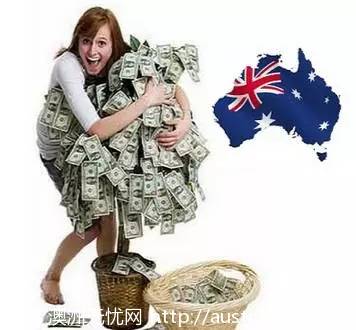
Australia is a more equitable distribution of wealth, the gap between rich and poor is not too big. At the same starting point and experience value, regardless of white-collar, service industry or ordinary manual labor-based work, income is basically balanced, about 460,000 Australian dollars (US $) per year. If the technical category, heavy work income is far more than conventional occupations, such as well-known miners, brickwork, etc., the annual salary can be as high as 15- two hundred thousand Australian dollars.
According to the average value of $5-60,000, the tax and medical insurance will be removed, and the cost of living will be reduced, and the cost of living will be reduced. Australian interest is included in total income and is subject to income tax.
What is usually a high salary? Most are skilled professions such as doctors, lawyers, finance, IT and other technical professions. In Australia, there is always a relatively higher income if there is a craft that no one else can. In Australia, after two or three years of employment in large and medium-sized enterprises, there are more opportunities to increase their salary to 8 ~ one hundred thousand years. If Chinese enterprises are chosen, they will be more than 30 ~ 40, 000, and in two or three years, they will increase to 5 ~ 60, 000. The starting point requirement is not too high.
Australia currently has a minimum hourly wage of US $17.7 per hour, ranking among the highest in the world.

Australian house prices are also closely related to geographical location and population distribution. Sydney, Melbourne, Brisbane and Adelaide are the four most populous cities with higher prices. The farther away from CBD, the cheaper the areas farther away from major cities. Almost everyone in Australia has a car, so the scope of life has expanded a lot and there is a lot of choice when buying a house.
The median price of apartments in Sydney is around 680000, Melbourne is about 470000, Brisbane is about 370000, Adelaide is 300000, and Paz is around 360000, according to Domain.
Villa (house), Sydney above 1.06 million, Melbourne over seven hundred and seventy thousand, Brisbane five hundred and twenty thousand, Adelaide four hundred and ninety thousand, Paz five hundred and sixty thousand or so.
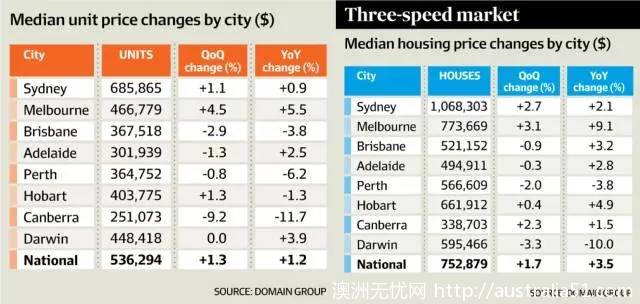
According to the above-mentioned ordinary wage family about 5 to 60, 000 years of income, each year save more than 20, 000, in Sydney to buy a six hundred and eighty thousand two-bedroom apartment, in theory, 34 years. In fact, Australia's housing policy is a down payment of 10%, up to 80% of loans, good income to buy an insurance can be up to 90%. In other words, the working class can have their own house in Australia with about three years of savings. In addition, overseas income to make home loans recently is the most restrictive period in history.
3 consumption
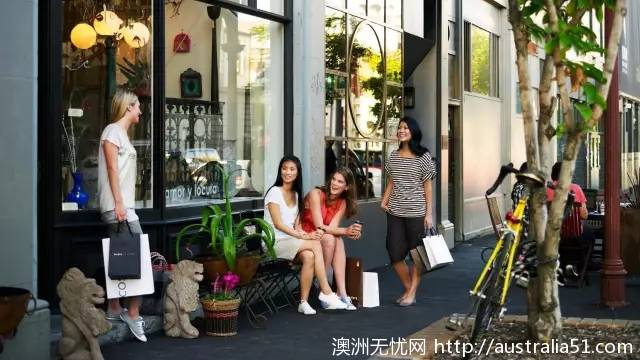
Australia's consumer shopping is very monotonous as compared with the country, and every city is a little different.
- Basically go to Coles,Woolworths; for daily use.
- Shopping is basically Westfield,Myer,DJ;.
- The purchase of home appliances is basically JB HiFi ('s original stand-alone Dick Smith has been declared bankrupt);
- Go to Hype,Platypus; for shoes.
- Fast food is McDonald's, KFC,Hungry Jacks,Oporto;.
- Mobile phone contracts and operators are mainly: Vodafone,Optus,Telstra several;
- Most of the deposits are in the Big four: Commonwealth Bank,Westpac,NAB,St. George.
These big groups and brands have a basic monopoly on all the day-to-day consumption of the Aussie. Of course, with the increasing number of Chinese immigrants to study in Australia, the CBD and the major Chinese are also in a number of Chinese supermarkets such as Taji, Tongli, New Oriental, and new people. The Chinese restaurant is also a number of Chinese dishes, such as Cantonese, Sichuan, Hunan and North, and can be eaten in the big cities of Australia.
4 Environment

Exclusive of a continent, away from the hustle and bustle of Australia, the environment itself is good to say, Australia's proud brother has to use the map:


360 days a year, almost every day is blue.
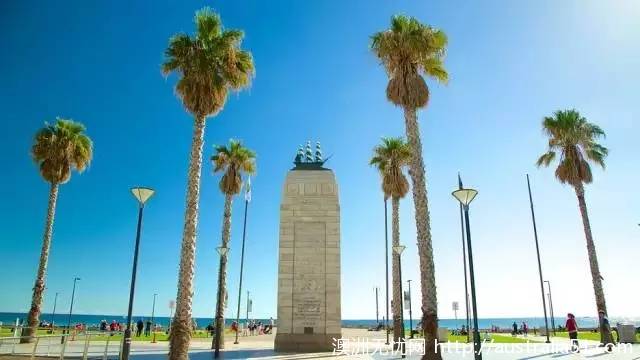
Except for the purple summer.

In fact, the environment in Australia is so good that not only can the picture surprise you, someone really can figure out how much it is worth: statistics released by the Australian Bureau of Statistics show that Australia's natural wealth value was in the 10 years from 2006 to 2015. It rose from A $3 trillion to A $ five trillion seven hundred and ninety nine billion nine hundred and ninety nine million nine hundred and ninety nine thousand nine hundred and ninety nine.

So, based on January 2016 data, the total value of natural wealth is A $ five trillion seven hundred and ninety nine billion nine hundred and ninety nine million nine hundred and ninety nine thousand nine hundred and ninety nine and Australia's population is 24 million. Count it down:
Equivalent to every Australian resident
$ two hundred and forty thousand in natural wealth

5. Universities
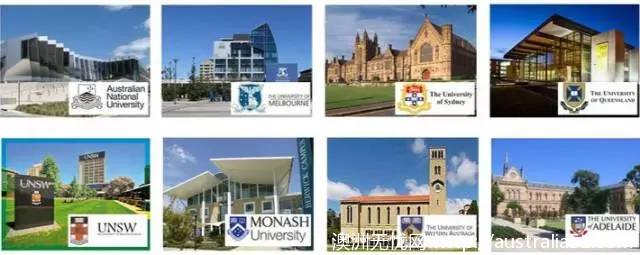
8: Australian National University, University of Melbourne, University of Sydney, University of New South Wales, University of Queensland, University of Western Australia, Monash University, University of Adelaide. Second, the most famous of the four-star university is the University of McCorey, the UTS Sydney University.
For Australians, being admitted to the eighth National Congress, especially the National University of Sydney, the University of Melbourne and New South, is just as difficult for Chinese people to go to Tsinghua University. As a Chinese student, it is much easier, as long as the domestic results are not too scum, IELTS can test 6-7 points, the eight basic can apply. Conditions can almost curve to save the country, pre-study or language can be solved if the economy can afford.
Tuition fees: eight colleges and universities are expensive, if they are international students, you spend about A $2.5-300, 000 a year in minutes. With Australian PR or citizenship, it would be much cheaper, usually around 1 / 3 for international students, and could apply for interest-free student loans.
The TAFE and other vocational schools offer a variety of practical courses, direct employment, and lower tuition fees.

The following is the approximate price of some commonly used goods (in Australian dollars)
KFC / McDonalds (Burger fries Coke): 6-10 yuan / set of general restaurant: 20-30 yuan / person
Milk: 1 yuan / litre
375ml can Coke: 16 yuan / 24 cans
Supermarket juice: 2 yuan / 2 lite
Coffee: 3 / 3. 5 yuan / small cup; 4 / 4. 5 yuan / large cup
Eggs: 2.5 yuan / 12
Brother 2: $15 / KG
Chicken: $3 / KG
Cattle: around 18 / KG
Birth rate:10-15/ a dozen
Apple: $1 / KG
Banana: $1 / 2 / KG
Cabbage: 1 yuan / kg (vegetable and fruit prices fluctuate slightly with season)
Potatoes: 1 yuan / kg tomatoes: 3 yuan / kg 5 yuan / jin
Edible oil: 4 yuan / bottle beer: 3 yuan / bottle fixed telephone: 60 yuan / month (basic package) mobile phone: 30 / 50 yuan / month (sign the latest iPhone7:70~100/ month) gas: 20 / 30 / month electricity rate: 40 / 60 / month / cell phone: 60 yuan / month (basic package) mobile phone: 30 yuan / month (sign the latest iPhone7:70~100/ month) gas: 20 / 30 / month electricity rate: 40 / 60 Yuan / month toothpaste: 2 yuan / shampoo: 5 yuan / bottle (750 ml) towel: 3 yuan / piece of fresh film, Tin foil: 2 yuan / roll laptop, 500 yuan 1000 / desk / computer table: 60 yuan / piece Levis jeans 40 yuan / pair CK shirt, pants: 60 yuan / piece Nike,Adidas sportswear: 40 yuan / piece; Shoes: 100 / 2 Polo cardigan: 30 / 60 yuan / piece Armani men's jacket: 200 / 300 yuan / suit: 500 / 2000 / suit
UGG:100~200/ dual Coach package: 200x400
LV package: 1200
Hermes package: 20,000 +

Australians generally abide by the national tax system, pay taxes in accordance with the law, but also think that taxes are heavier. So how much tax does Australia usually pay? This is really a difficult question to answer. The main reason is that Australia has a tax rebate system. People pay taxes every year, explain to the tax bureau how much they earn, how much tax they should pay, how much they have paid, and then goverment returns some of the tax according to each individual's situation.
As far as personal income tax is concerned, 25% to 30% of the income paid by the average 5-60 000-year-old person is used to pay the tax. The higher the income, the higher the individual tax.
Under $18200: exemption from duty
The income tax rate in the $18201 / 37000 range is 19%
The income tax rate in the range of $37,000 to $87,000 is 32.5%
The income tax rate in the $87001 to $180000 range is 37%
Income tax rate above $180000 is 45%
The tax rebate link, generally, is that the heavier the family burden (for housing, raising children), the more tax returns, some even can return.
Negative tax deduction (negative gearing) is a special tax method in Australia. In a financial year, if the expenditure on investing in real estate exceeds the investment income, (for example, if the bank mortgage interest, utilities, municipal expenses, etc., plus house depreciation, etc., exceed our rent) negative taxable income. We call it negative withholding tax.
If you are interested in the latest accurate information on the Australian tax system, you can take a look at the Australian Taxation Bureau's (ATO) website at: http://www.ato.gov.au
8. Immigrants
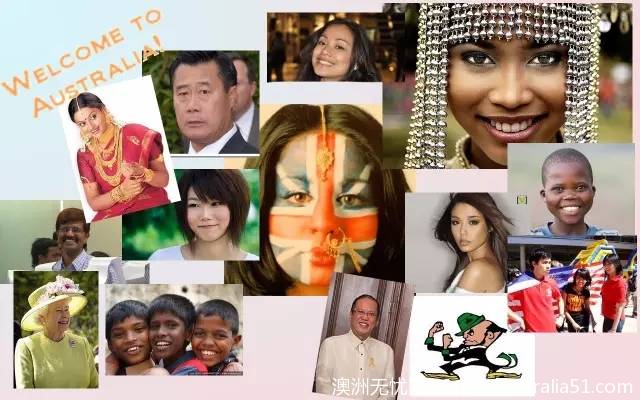
As a typical immigrant country, Australia now has a total population of 24 million, of which about 6.6 million Australians are born overseas and about 1.8 million are born in the United Kingdom or New Zealand, with absolute dominance. The power of China and India should not be underestimated, nearly four hundred and fifty thousand Australians were born in mainland China.
Walking in the heart of Chinatown, Australia's major cities, you can meet Chinese people everywhere, as well as all kinds of Korean, Japanese, Thai, and other Asian-Americans.
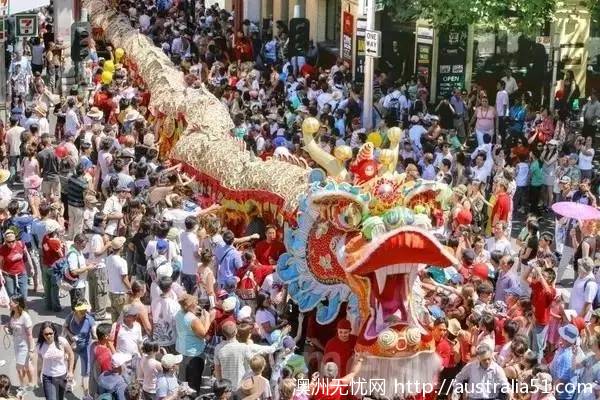
Chinese people have a lot of power, in addition to immigration must not be ignored, but also foreign students! According to the Australian Ministry of Education, the number of Australian overseas students has reached four hundred and ninety seven thousand nine hundred and ninety nine in 2015, and Australian international students come from nearly 200 countries around the world.
And Chinese students are undoubtedly the dominant side, reaching one hundred and thirty five thousand, accounting for 27.3% of the total.
In addition, the education industry is one of Australia's five pillar industries, bringing Australia A $20 billion in revenue in 2015 alone.
Immigration posture Summary

Many people who have never been here want to emigrate to this country, and Australia's immigration policy changes every year. Taken together, the main forms of migration are:
- Investment migrants: including business innovation visa, 5 million Australian dollars investment immigrants, business talent investment migrants, retired investment immigrants and so on;
- Skilled immigrants: suitable for international students and young people. Choose the appropriate immigration major, through Australia to study, meet the conditions of English, age, vocational assessment and so on, make up the corresponding immigration score (for example, 60 to 70 points), can achieve immigration through the invitation system;
- Working migrants: that is, employer-guaranteed nominations. In this way, professional and English requirements are relatively low, as long as the corresponding position, qualified and guaranteed employers, qualified to apply for a 457 work visa, after 2 years can be transferred to the PR green card;
- Spousal migration: immigration is achieved by marriage or by the guarantee of a lover. It must be proved to be a true love / marriage.
- Family migration: including handling migration for immediate family members such as parents, the last member of the family to emigrate and so on.
9 Primary and secondary schools

The primary and secondary schools in Australia are dominated by public schools. There are, of course, private primary and secondary schools, and the teacher's hardware is quite good, but there may be several thousand tuition fees a year, unless special money is particularly rich.
So when it comes to children's education in Australia, they tend to move to their favorite school districts to facilitate access to the best public schools. This is also the main reason for the high prices of school districts in Australia's major cities.
No tuition fees are charged in Australia's public primary and secondary schools. But there are still some other miscellaneous expenses, about a few hundred dollars a year. In some areas, there are school buses to and from school. And primary and secondary school students are basically not much pressure to read. In addition to culture, college entrance examination classes, there are many practical skills courses, such as first aid, field survival and so on.
10 Traffic

Almost everyone in Australia has a car. The car can also be used for car loan, even with the first payment, monthly installment. Every year to RMS to register, dozens of knives. In addition, there is no other expense in the payment, the toll gate is very small, and some road sections can also be returned. The driver's license, also a dozen of knives, does not need any mandatory training, so long as you feel it's open, you can take the exam. In addition, the insurance, in addition to the third-party life insurance is mandatory, others see oneself, a year 400-1000 of the vehicle insurance is in the normal range. Oil prices are also relatively cheap, and about 1.2 per liter.
Airline tickets are also relatively cheap, the whole of Australia, round-trip tickets plus taxes often within $100 can be settled. So even for a low-income group of 1000-2000 Australian dollars a month, flying out is not a distant thing.
The headache is public transport. Because of the low population density, there are fewer trains and buses in Australia, relatives who are a little farther away from CBD, waiting for half a day by bus, fewer nights and fewer weekends. The price is also relatively expensive, half an hour or so of the train, it will cost about $4. The hardware aspect also lags far behind China.
In terms of high-speed rail, AJ found that China's 2016 high-speed rail map provides great convenience to its domestic partners, but one problem is that it does not appear to be concise enough.
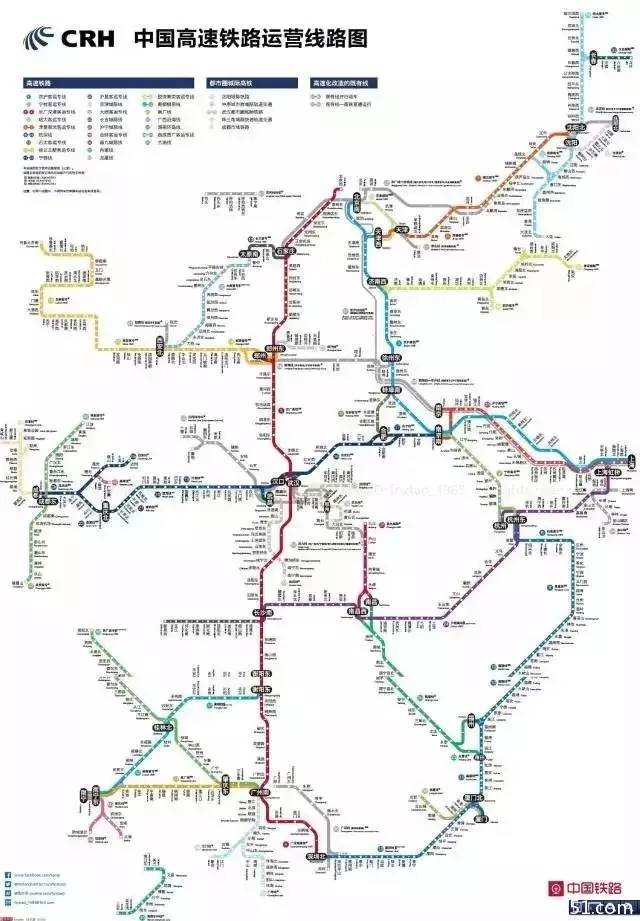
If you don't magnify your life, your cell phone is basically invisible. The map of Tuao's high-speed rail is much more obvious at a glance, no matter what device it uses, even the Nokia 3250 can instantly learn all the information on the map.

11 benefits

Australia is one of the earliest countries in the world to implement the whole social welfare system and one of the best welfare countries in the world.
There are many types of post-immigrant benefits, including: free medical care, milk powder, kindergarten subsidies, free education, housing subsidies, loans to college and so on.
There are plenty of subsidies in Australia to have children. Milk powder does not need to buy, goverment will also give a variety of welfare subsidies, and paid maternity leave and so on. Poorer parents are also entitled to special parental benefits, up to $731.20 per fortnight for single-parent families, $476.40 per fortnight for two-parent families and $570.80 per fortnightly for two-parent separated families (for reasons of illness, etc.).
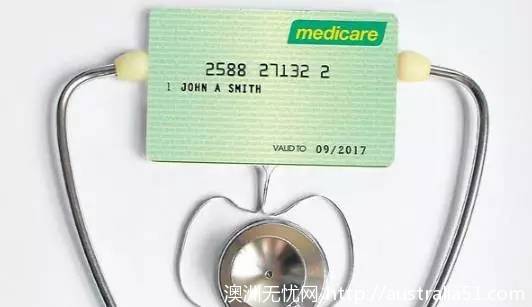
Unemployment benefits: if you do not have a job at the age of 22, you can receive it after passing the income test. Available fortnightly: single $527.60; partner $476.40 (per person).
Universal medical benefits Medicare
See GP (GP/ GP): Take a Medicare card and don't pay a penny. If you look at the Specialist, the MBS can be reimbursed for 85%.
Go to hospitals: public patients can enjoy free accommodation in public hospitals, treatment, care, and follow-up after discharge. Medicare pays 100% for public hospitals. But you don't have the right to choose a doctor. You can only be assigned by a hospital. You can't choose when to be hospitalized or operate. You have to listen to hospital arrangements.
Buy drugs: Medicare provides prescription drug subsidies to patients. Goverment has a clear list of subvented prescription drugs, each of which is self-paid (Co-payment). Different prescription drugs have different allowances. For the average patient, the maximum subsidy is $38.30 per purchase, and only $6.20 is paid for the drug after the purchase of the drug is more than $1475.70.
Retirement and pension benefits

Australia has very real old-age benefits, and even without the next penny of pensions, goverment will provide a certain amount of money to support the elderly for a normal life. The pension system consists mainly of three parts:
1. Superannuation that the employer must pay
The Super, which is paid annually by employers for the duration of work, is currently not allowed to receive less than 9.5% of its salary in the new state, and will be eligible for payment upon retirement. (B) under the current policy, men are 65 years old and women are retired at 62.5 years of age;
2. Goverment's Age Pension
This is the best quality of Australian welfare: whether or not you buy a pension, whether you have worked in Australia or not, after retirement, you can go to the Welfare Department to collect it. The basic pension is payable every two weeks, in the following amounts:
- Single $794.80
- Partner (per person): $599.10
- Partner (but separated due to health problems): $794.80
3. Portion of individual voluntary contributions:
To hand over to the goverment or institution, as a long-term investment, for their old age to save more money. An estimated annual gain of 6% to 8%. Better than bank interest.
Finally, I hope this information is useful and shared with everyone who yearned for it.